Makunduchi
From the summer of 2005 to the summer of 2006 I lived and worked in Makunduchi, a village on the southern tip of Zanzibar. I had arranged the job through the Zanzigap organisation and was teaching Maths, English and IT in Makunduchi Secondary School. I lived in a bungalow on the edge of the school grounds, during my year living there I painted the outside of the house and built a garden. In the garden I planted Coconut, Passion fruit, Guava and Papaya.
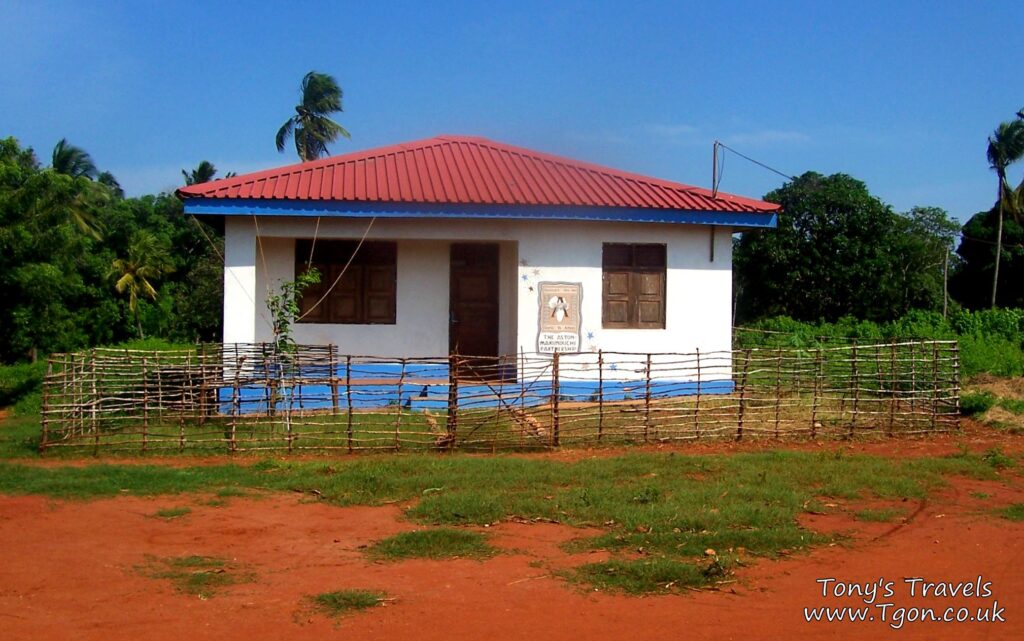
For the first six months I got food from the family of one of the teachers. Every day I would collect two containers, one filled with rice, the other containing a fish stew. After eating this for six months I decided that I would start cooking for myself so I went out and bought a charcoal stove. My cooking was rather limited but I managed to make my own chips, fried eggs and my own version of a Spanish omelette. I really miss sitting out in the courtyard under the stars cooking and talking with friends.


Makunduchi School is made up of a collection of classrooms with corrugated-iron rooves. The classrooms mark out a perimeter of the school, with a large courtyard, or playground in the middle which contains an old well. The school also contains vegetable patches which are filled every year, I witnessed them being planted when I arrived and as I was leaving the crop was almost ready for harvesting.
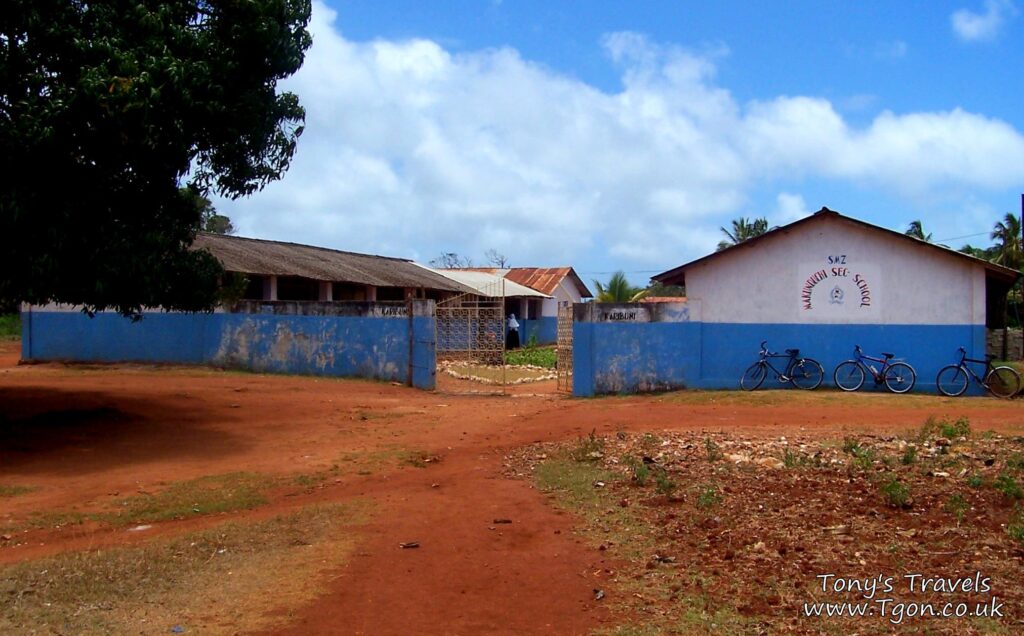
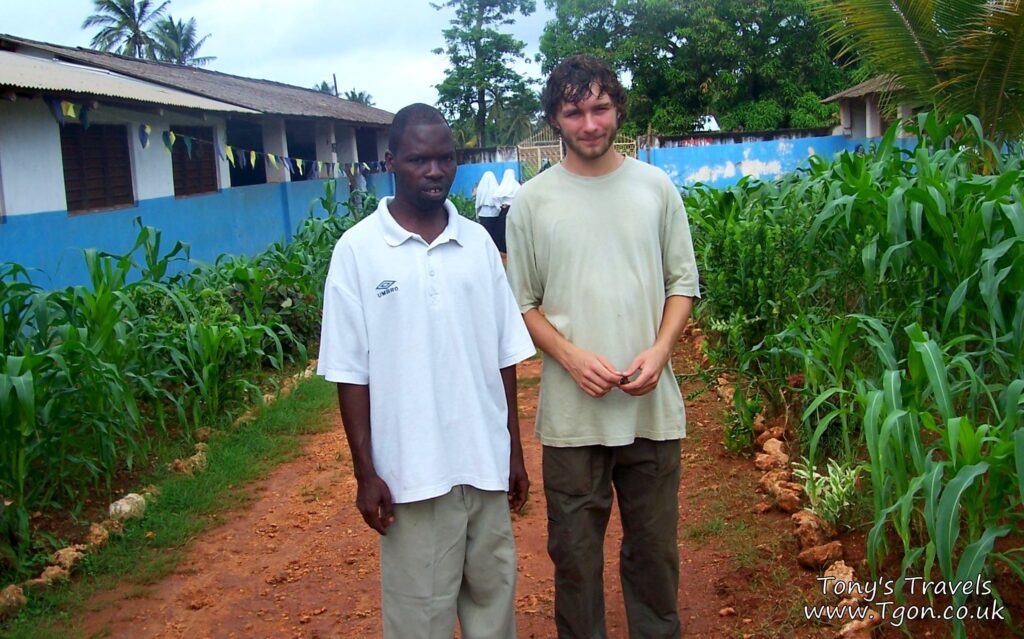

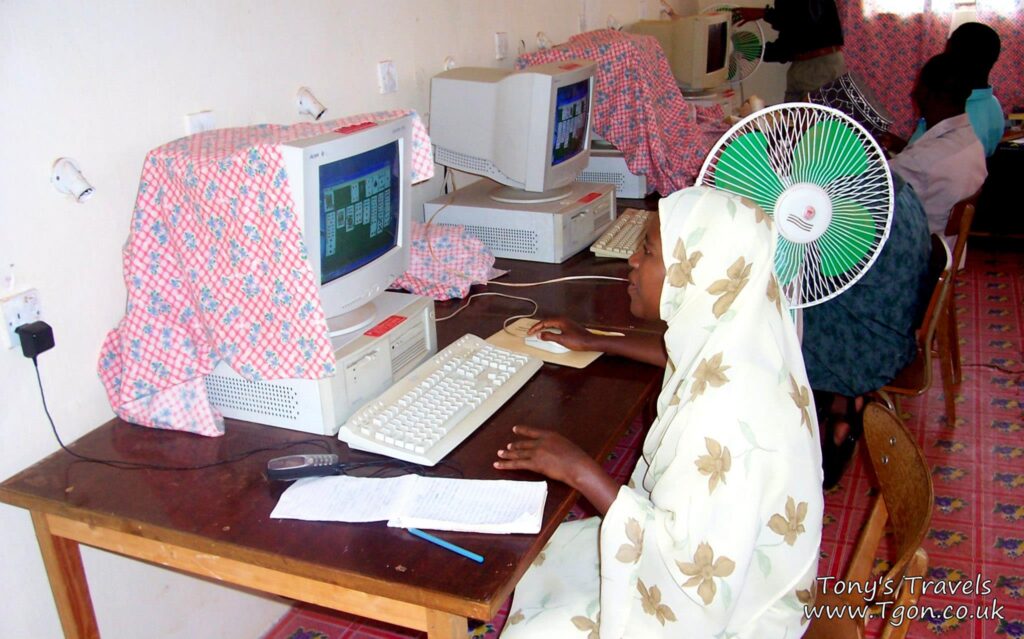
The classrooms contain small wooden tables and chairs or wooden benches, with blackboards at the front of the room. The blackboards differ in quality greatly, some of them flat, some covered in holes, some of them painted with blackboard paint, some with normal black paint. Writing on them with chalk took some practice. The students are very friendly and eager to learn, a refreshing atmosphere in contrast to the English school system.


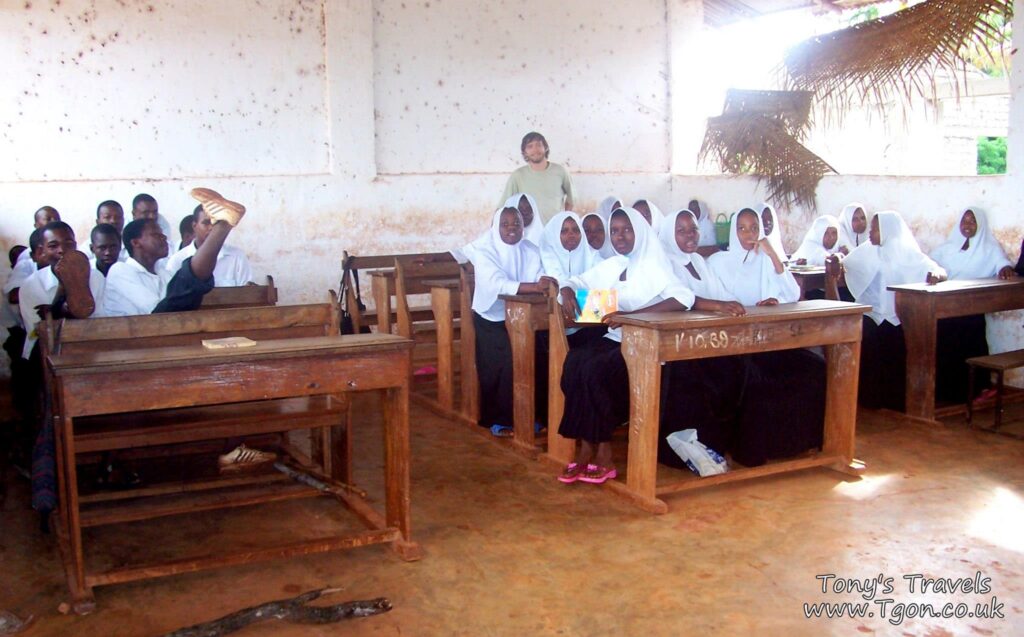
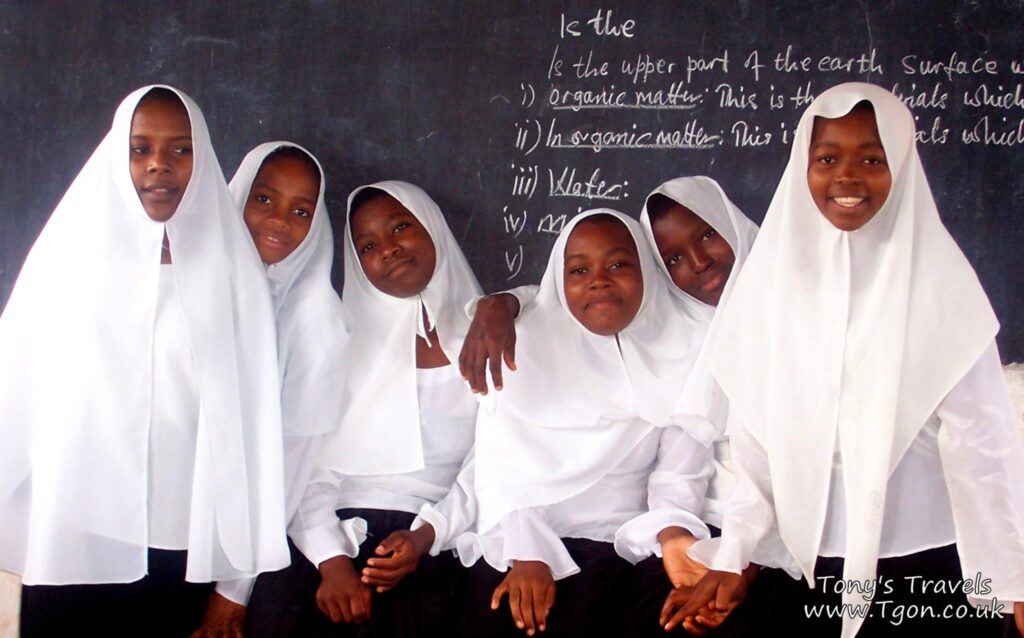
The village was made up of different types of houses, some similar to my own bungalow, most made up of sticks woven together and filled with clay, the roofs made of thatched coconut leaves. Others were made of coral rocks, the entire island is basically a large coral atoll, the soil only a few meters deep, or shallower, with a bedrock of coral.
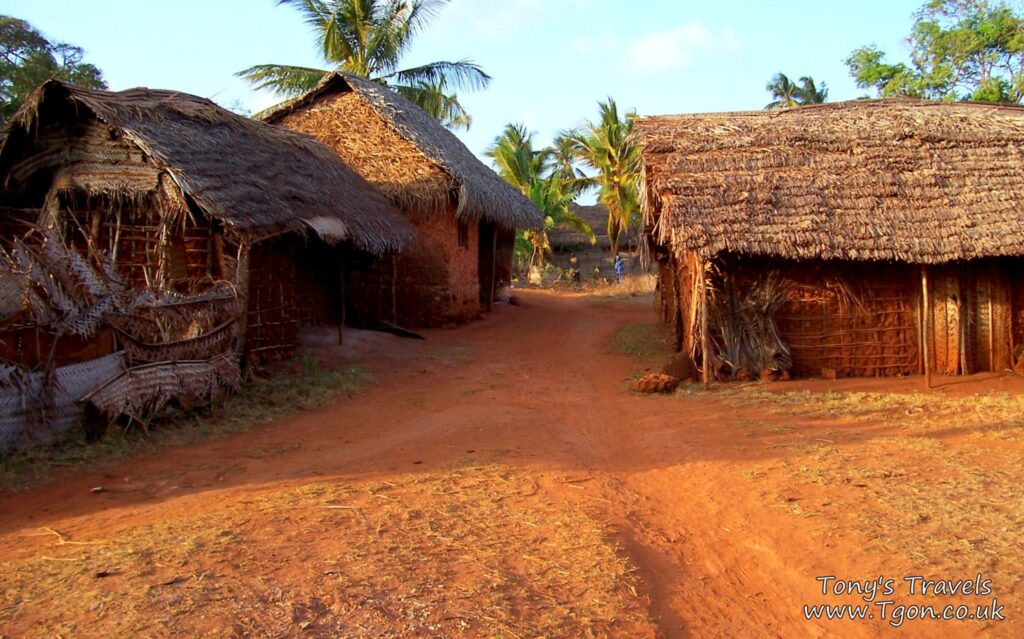
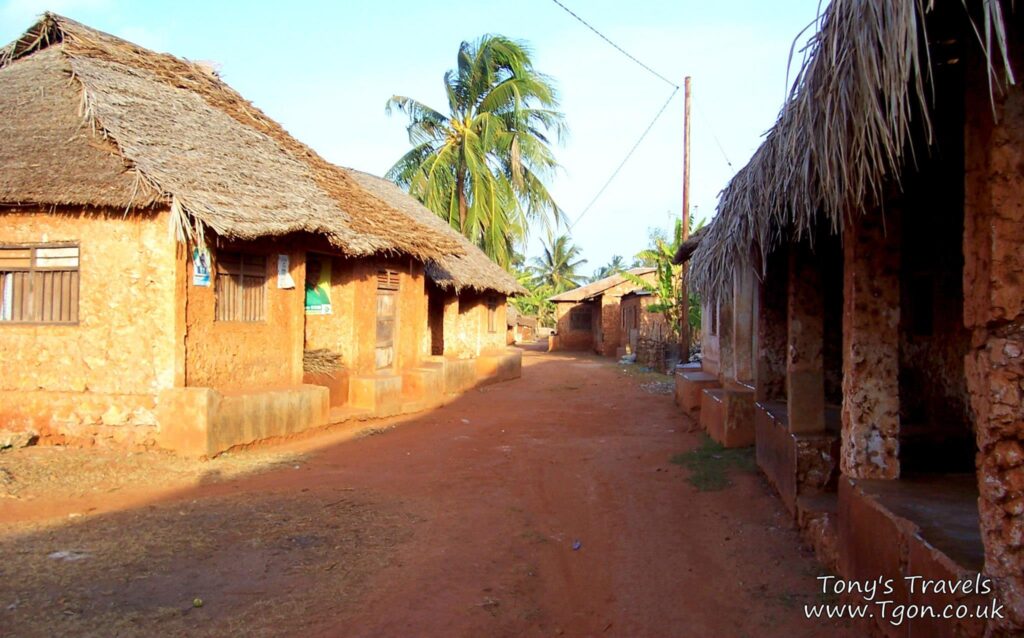
There is one main road which runs through the village and down to the beach, the Dalla Dalla station (bus station) is located on this road, along with the Police station, Government offices and several shops, with the hospital close by.
During my time working in Makunduchi my responsibilities grew; I started out teaching in the school, cleaning and repairing the computers then creating an IT course. But after a few months of living in the village I also went to repair computers in the hospital and local government offices. During the election the main street filled with people wearing the CCM party colours of green and yellow.


The people in Makunduchi were very welcoming and kind. I often spent time exploring the village or playing bao (an east African board game) or visiting the families of my friends. One of my friends showed me a collection of pictures that he had of him and his family, so I took some time to go and take more photographs of them to help build his collection.
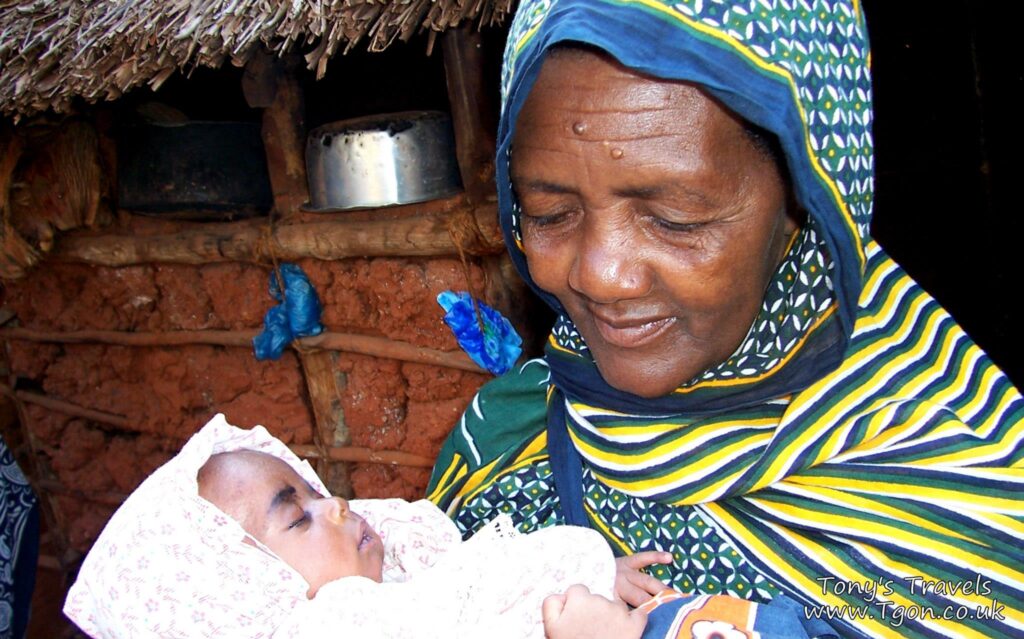
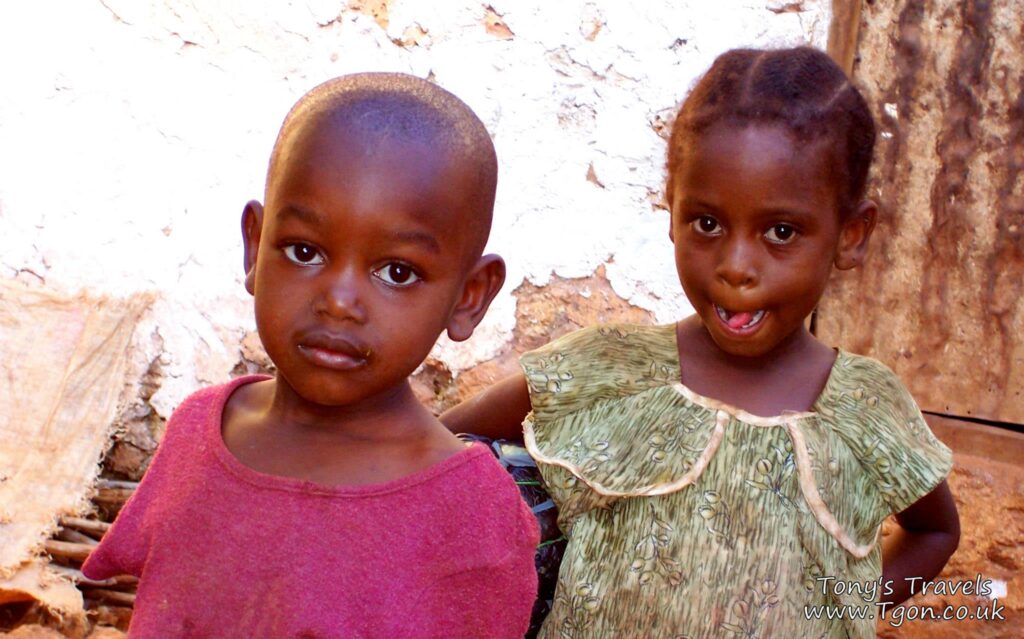
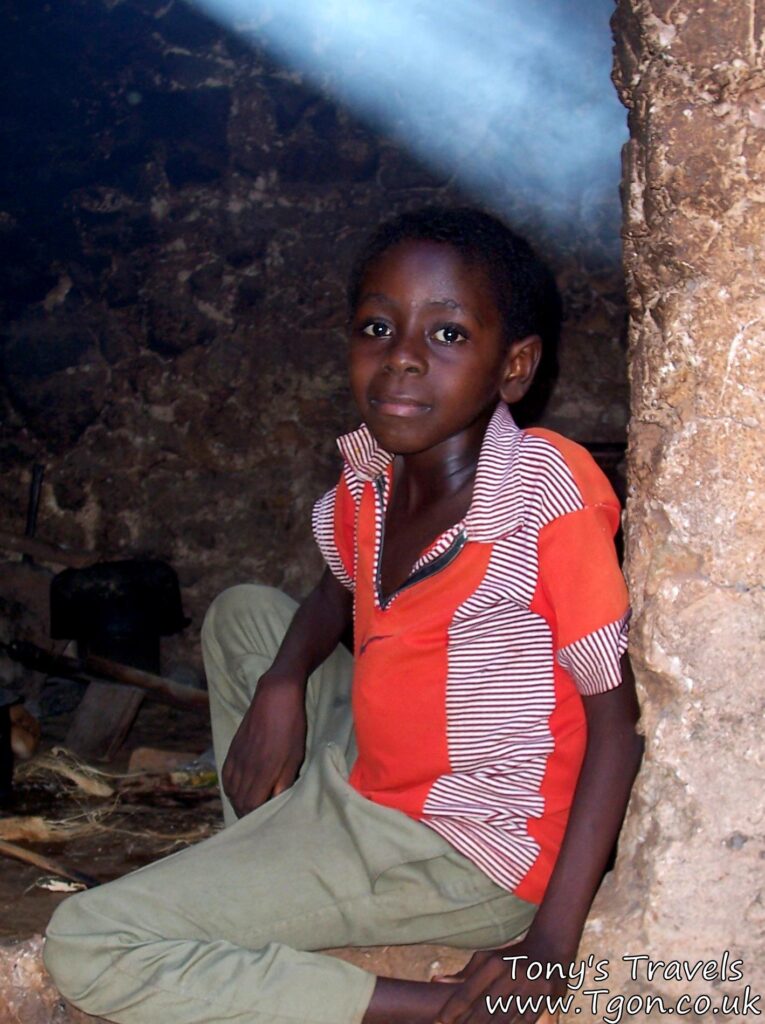
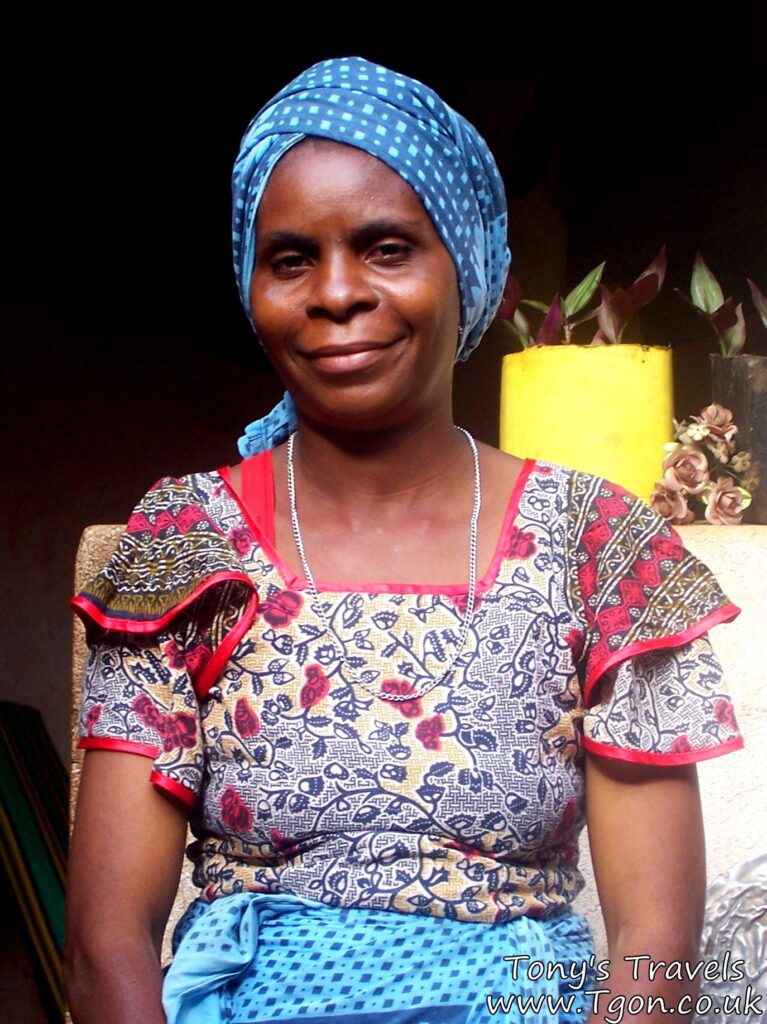
Makunduchi is close to a beautiful beach, like an idyllic tropical island. The beach is on the edge of a lagoon, created by the coral reef which encircles most of the island. After I finished teaching I would often ride my bike down to the beach to swim or wander around for a few hours. Sometimes going down there to read books or write in my journal. I loved snorkeling alone out on the reef for a few hours in the afternoon.
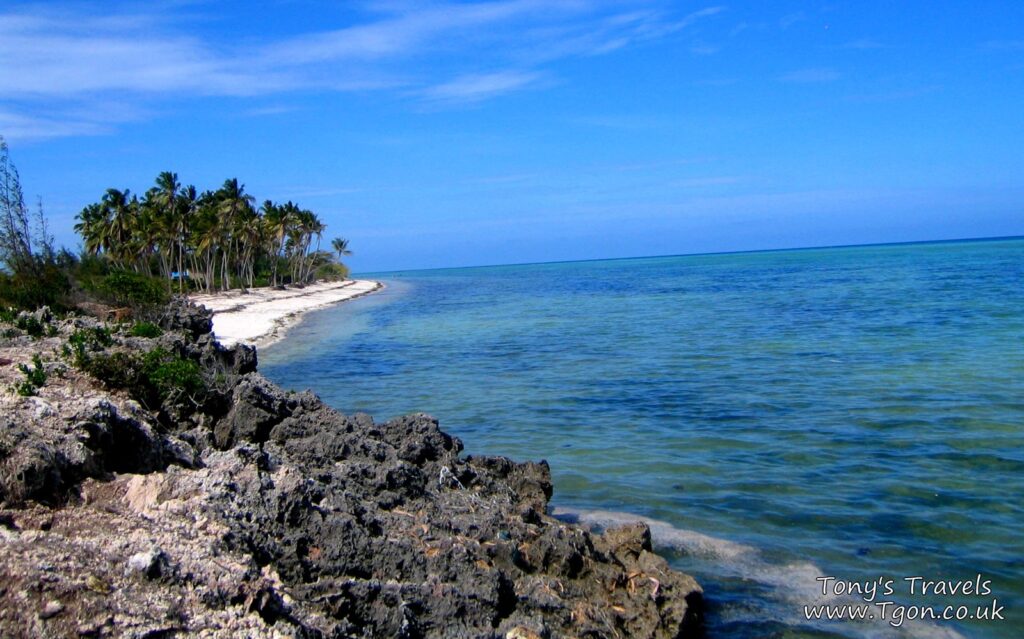
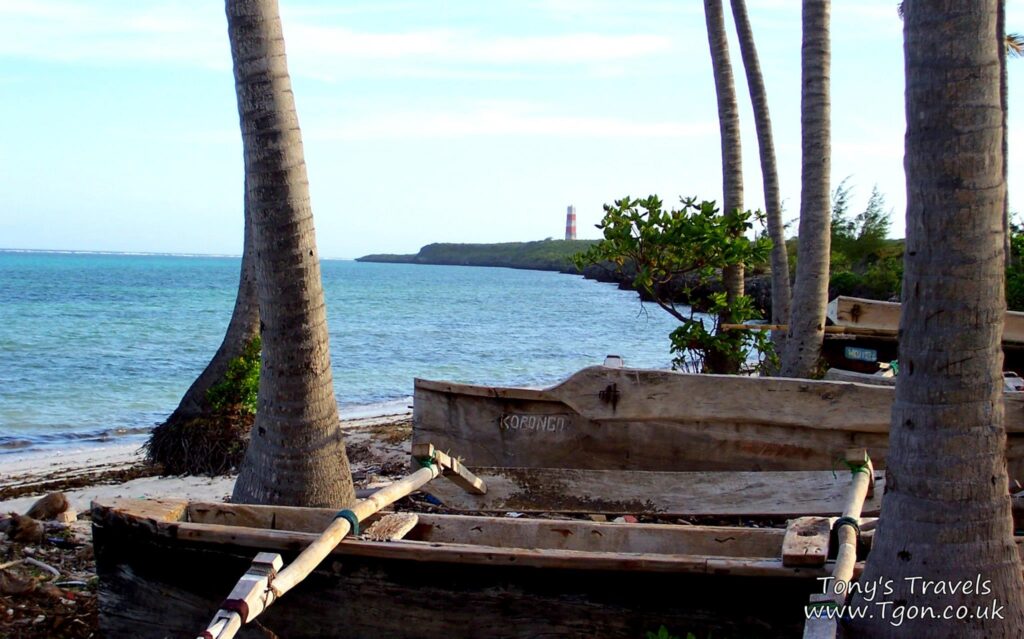
The beach has many practical uses as well as being a beautiful place to pass the time. The main use is fishing, the beach is covered with fishing boats which are taken out onto the waters with the tides. Coconut husks are also taken out onto the sand during low tides and piled together, then covered with coral rocks, to stop them floating away. The husks then rot down, the fibres are then used to make string and rope. There are also areas which are used to grow seaweed which is sold to the far east. Strings are suspended between sticks and small pieces of seaweed are attached to them. This is then harvested and exported.
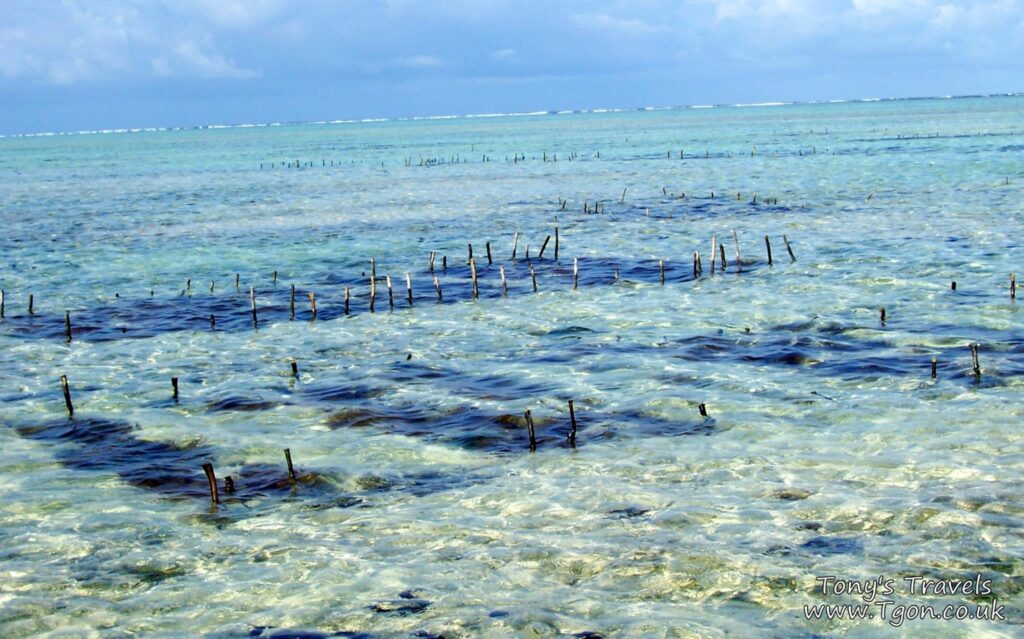
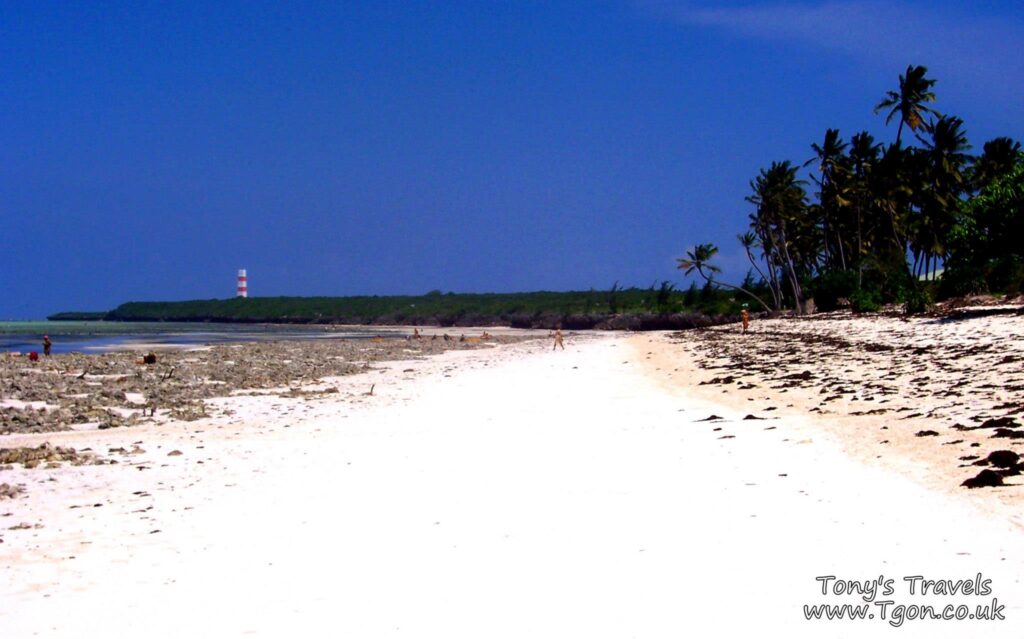
Jambiani
The next village, to the east, moving along the coast is called Jambiani. This village is at one end of a large crescent shaped beach, the sand is very white and I often found that the sun reflecting off it was more blinding than the light from the sky. The village is popular with tourists and has many hotels dotted along the coast.
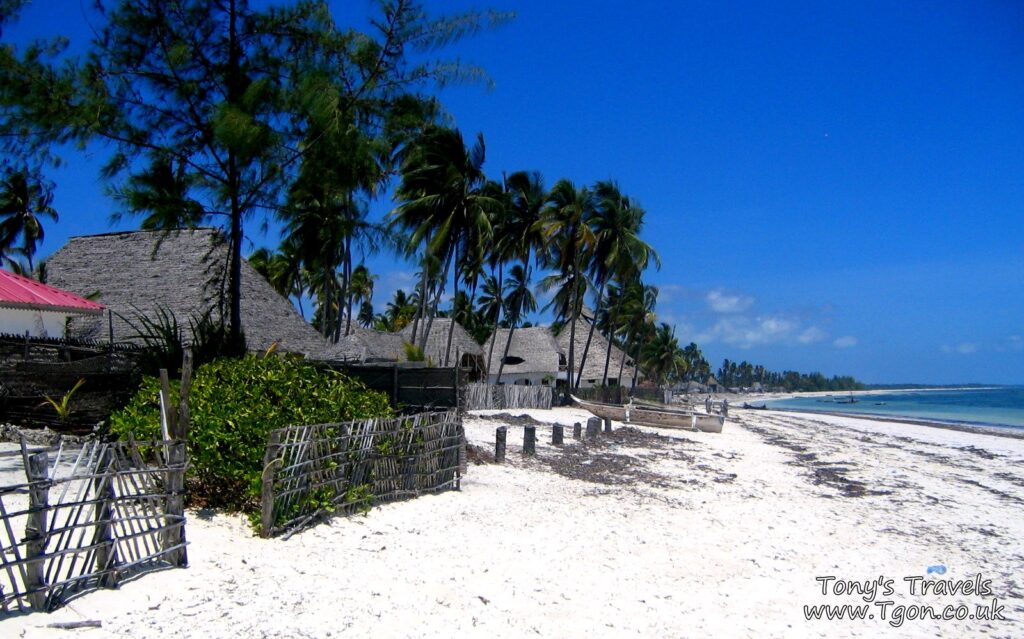

Jambiani is probably the second most popular tourist beach in Zanzibar. It has a great night-life and also has some amazing tourist activities, I went scuba diving there and went snorkeling several times with a friend of mine called Issa Kiko. One time he took us out while the tide was quite low and we walked along the top of the coral reef. The sea life in this part of the world is some of the most beautiful I have seen.
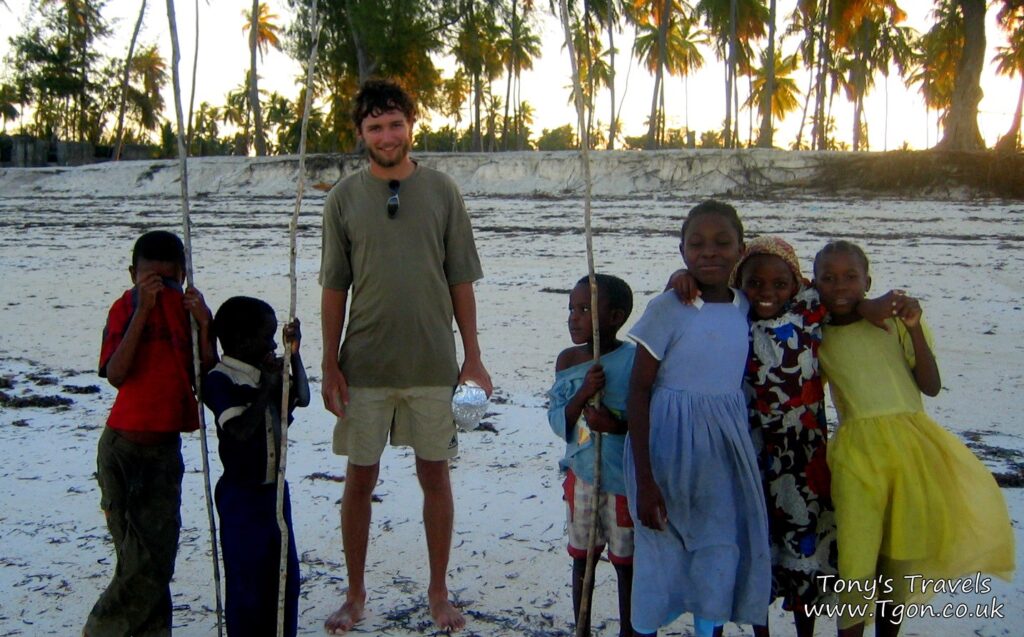
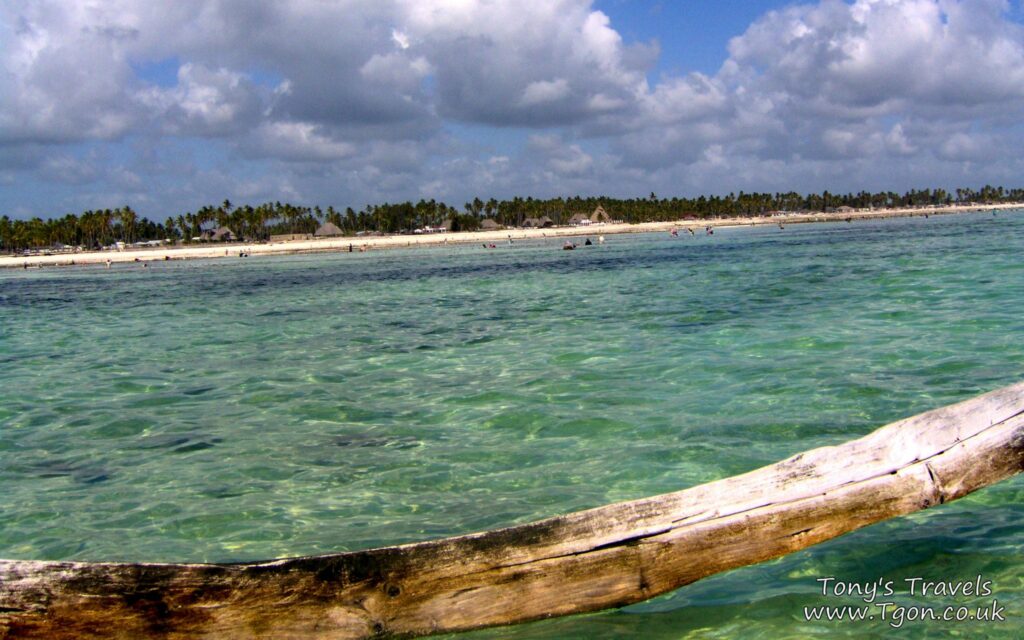
Kizimkazi
Along the coast to the west of Makunduchi is another village called Kizimkazi. I visited this village several times as this was the home of some Germans who were doing charity work involving solar power, one of whom came with me when I was backpacking around Tanzania. I also attended a celebration here at the end of Ramadhan.
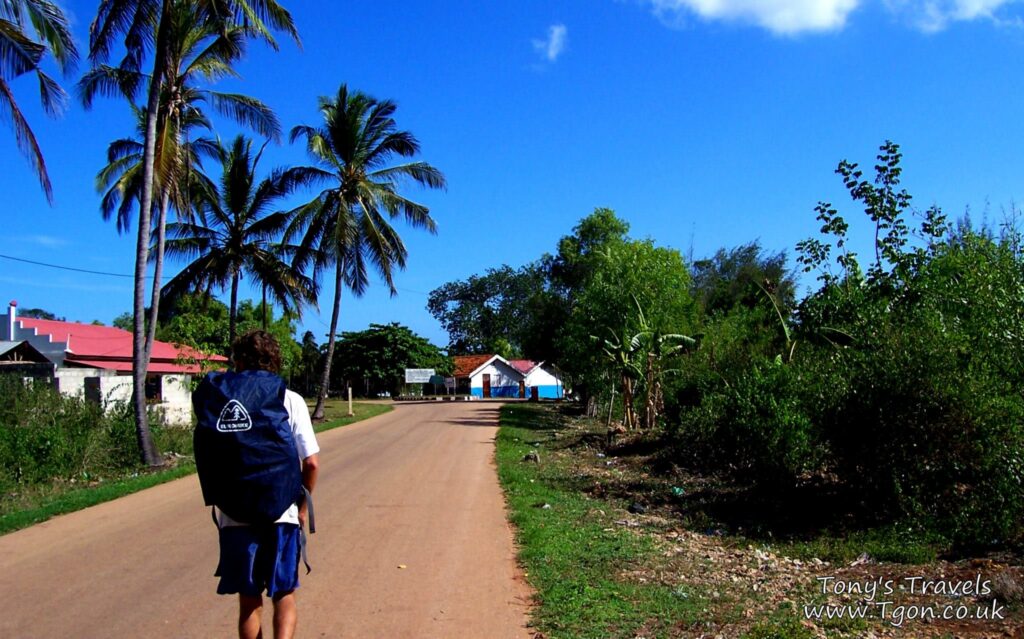
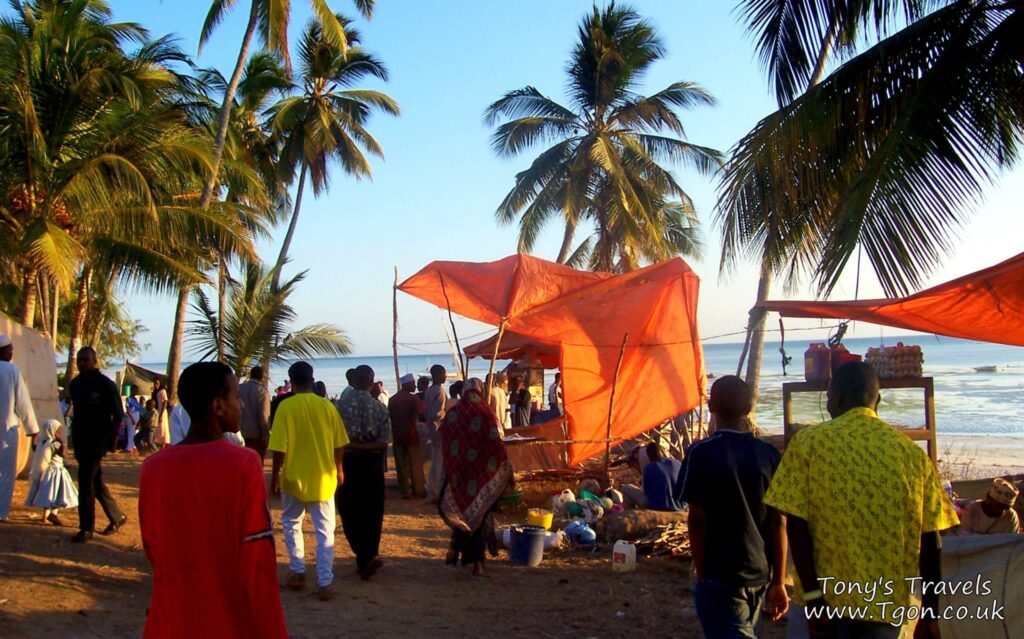
This village is not quite as popular with tourists as Jambiani, because its beaches aren’t as large. But Kizimkazi does have dolphins, from the few hotels that are located in this village you can arrange to be taken out by boat to swim with them. This was the first time I had swam with dolphins and it was an amazing experience. Unfortunately I didn’t have an underwater camera to take any pictures, but the experience is clearly marked in my memory. The ghostly white shapes of the dolphins moving quickly and effortlessly straight towards me through the water, a truly amazing experience.
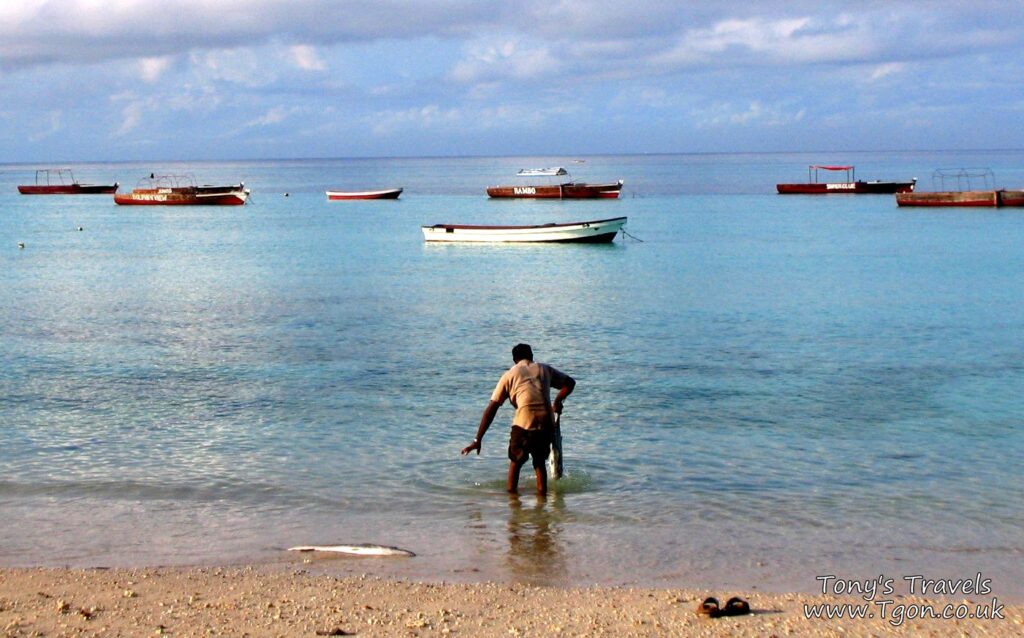
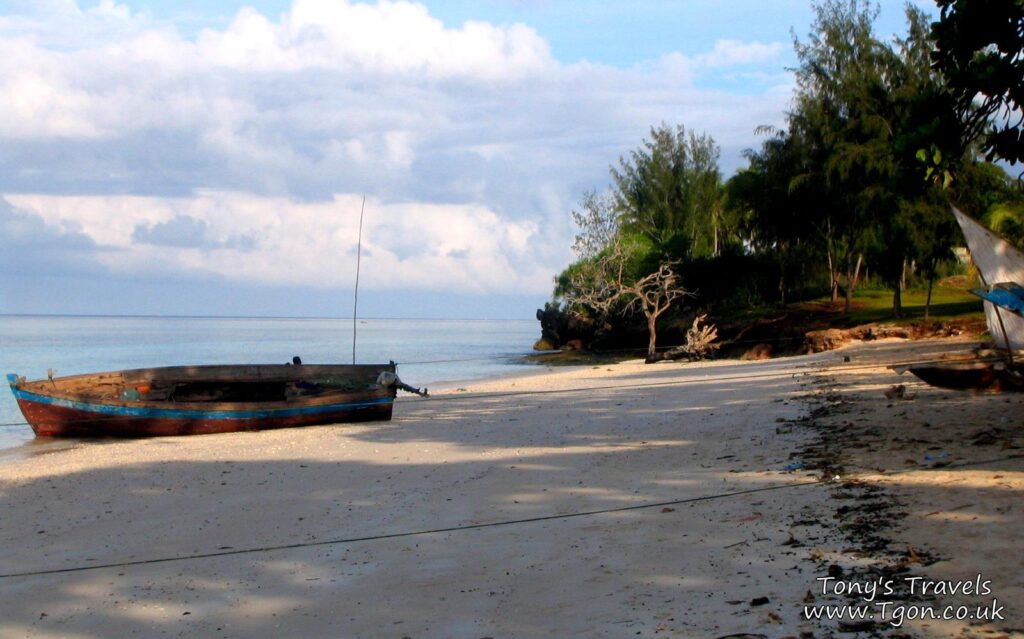
While Kizimkazi is not as popular a location for its hotels, it is often visited for day trips just to see the dolphins. However, there are some hotels and bars here and a nice quiet beach. A different atmosphere to Jambiani, with its bars and large hotels, but I did enjoy going there to sit quietly and admire the view. A few of the hotels here are truly beautiful, luxurious bungalows on the sea front surrounded by well maintained gardens. I stayed here for a few days when my family came to visit from December through to January. Some others are equally beautiful but in a more secluded and basic way, small huts on the sea front made from old boats.
Jozani
Roughly half way up the length of the island there is an area of forest and mangrove. This area is called Jozani. The area is home to the Red Colobus monkeys, a protected species which is indigenous to Zanzibar. The fact that the monkeys are protected means that they are incredibly tame. You came walk right up to them to take photographs and videos. I visited the forest four or five times during my year living on the island and enjoyed each visit as much as the first.
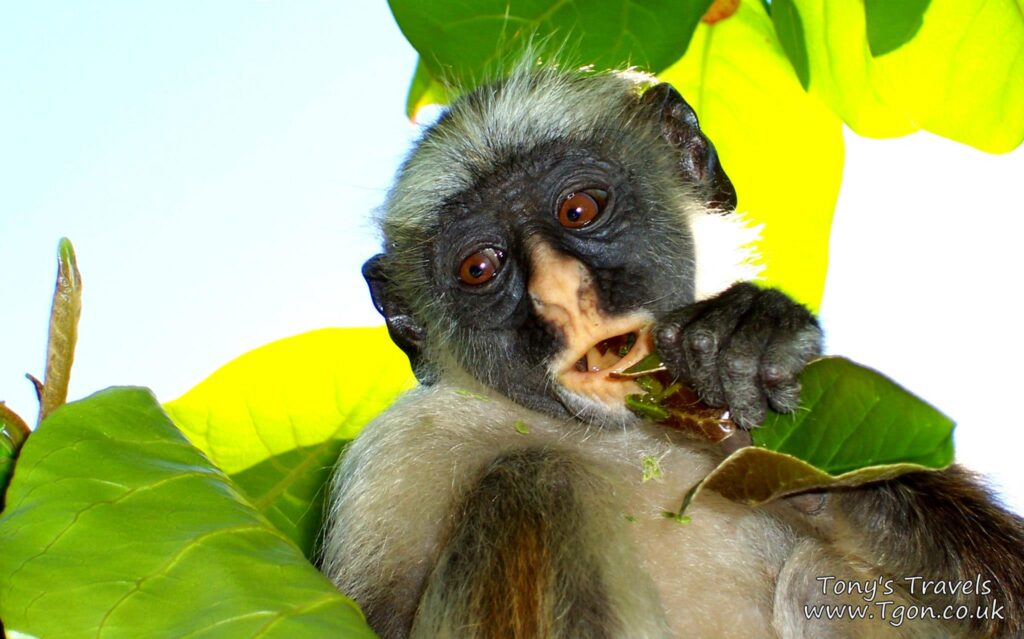
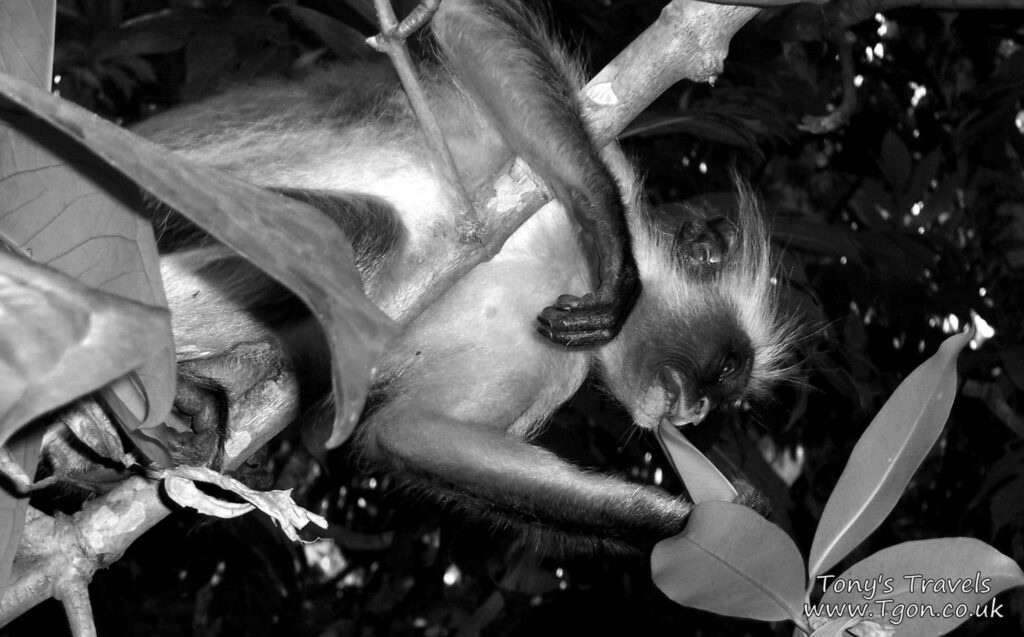
Jozani also offers a forest walk lead by guides, the forest is home to a couple of different species of monkey and lots of birds and insects. With the soil being shallow in the forest the trees grow to a limited height before collapsing, not being able to anchor themselves with deep roots due to the coral bedrock. There is also a small restaurant and gift shop which is usually occupied by a few tourists.
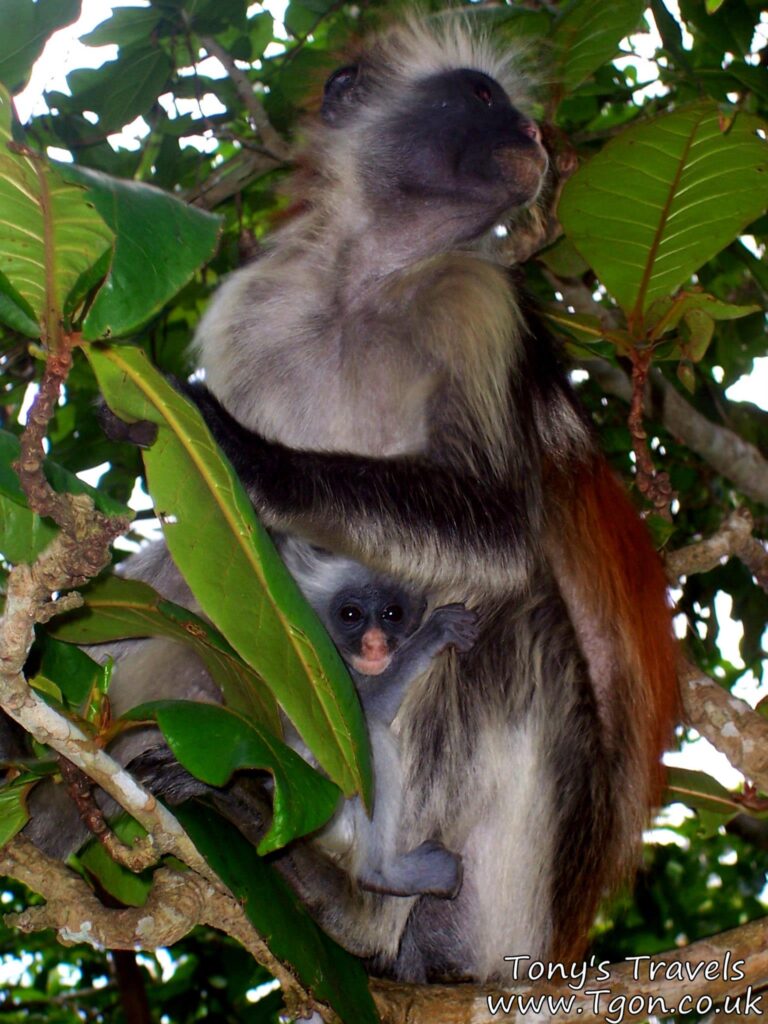
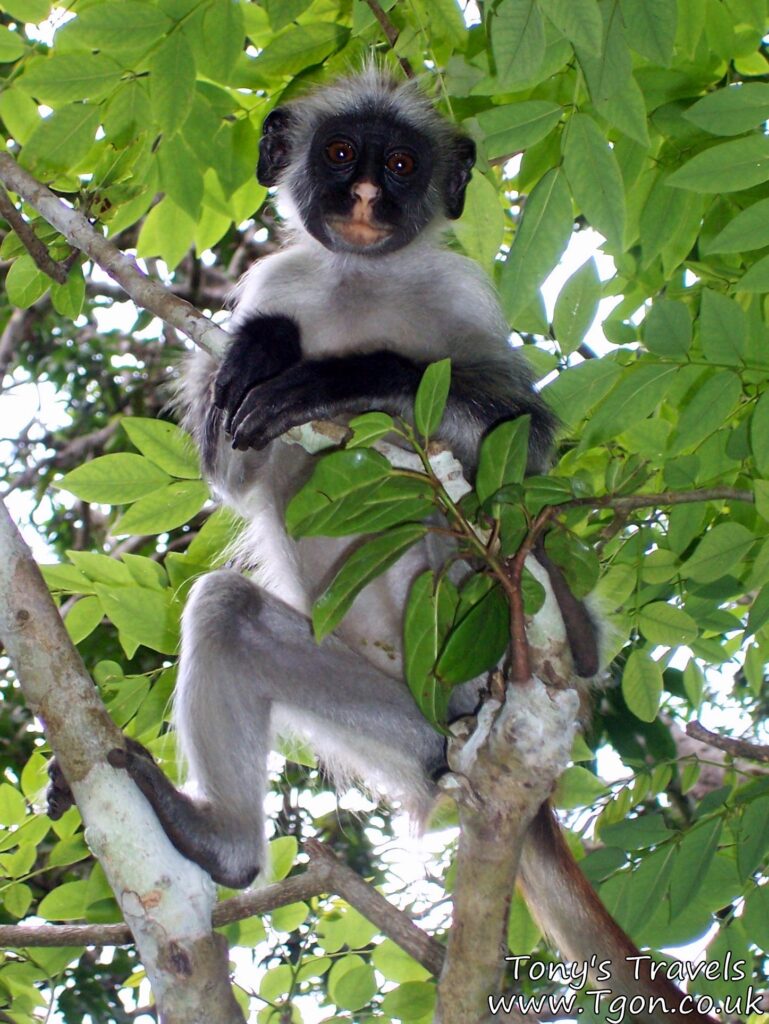
Across the road from the gift shop and car park is a section of mangrove. There is a long bridge platform which winds through the mangrove with seating areas. Visitors have very different experiences depending on the tide. When the tide is high the mangrove is full of pools of water with schools of fish swimming among the tangled roots. At low tide the mud is dotted with crabs who eat the leaf litter and hide away in small holes they prepare for themselves. A short way from Jozani, on the way towards Makunduchi, there is another park called Zala Park. The park is run by a teacher who has gathered a collection of wildlife which he cares for and charges tourists to come and see.
Zanzibar Town
Zanzibar Town is the only town on the island and is home to the largest markets, many large hotels, bars and restaurants. I used to visit town on weekends, spending time in the internet café, having a cold beer and wandering through the shops. Most of the hostels have roof top gardens where you can look out across the town from above. I used to enjoy sitting out there at night, listening to the noises of the town.
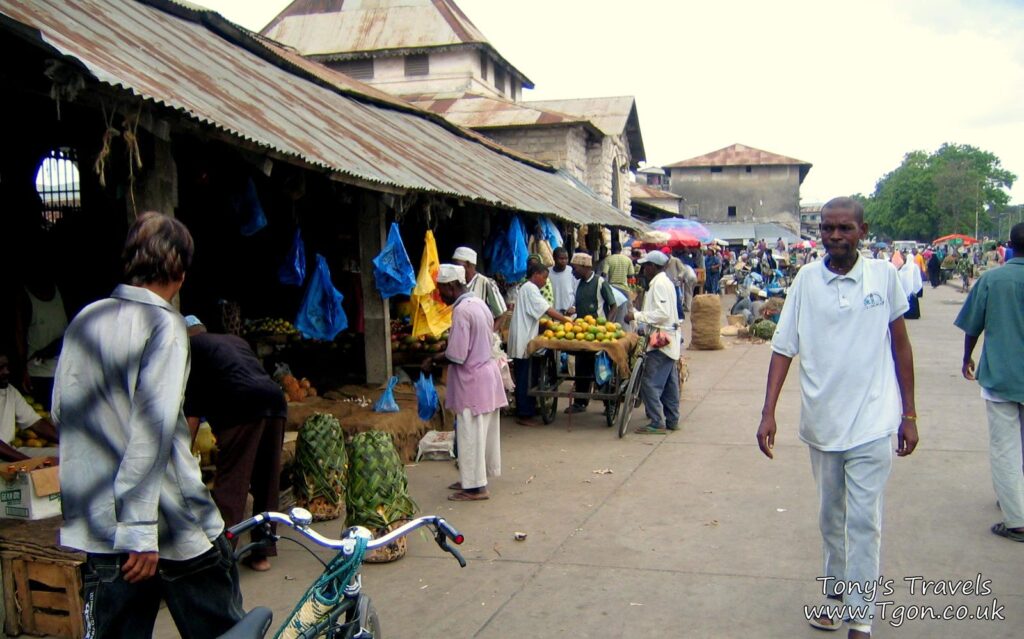
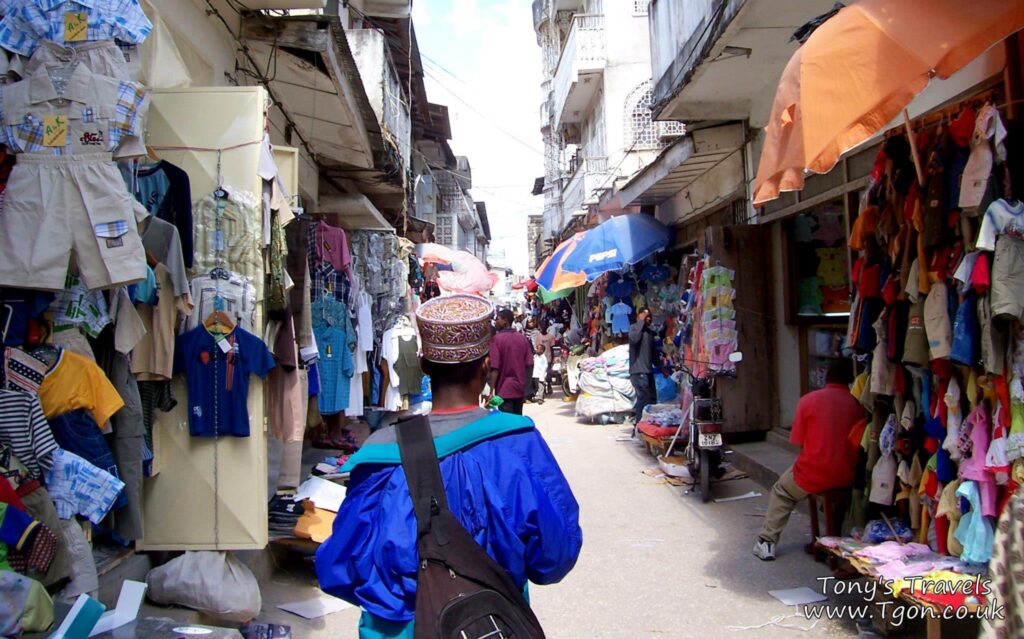
The streets of the town are narrow and winding, with lots of shops selling souvenirs. At first I found the streets quite confusing, not being able to navigate my way around. But after spending a day wandering around I soon got to know the streets and where to go to get specific souvenirs. I would recommend wandering the streets in the rain, the atmosphere is amazing.

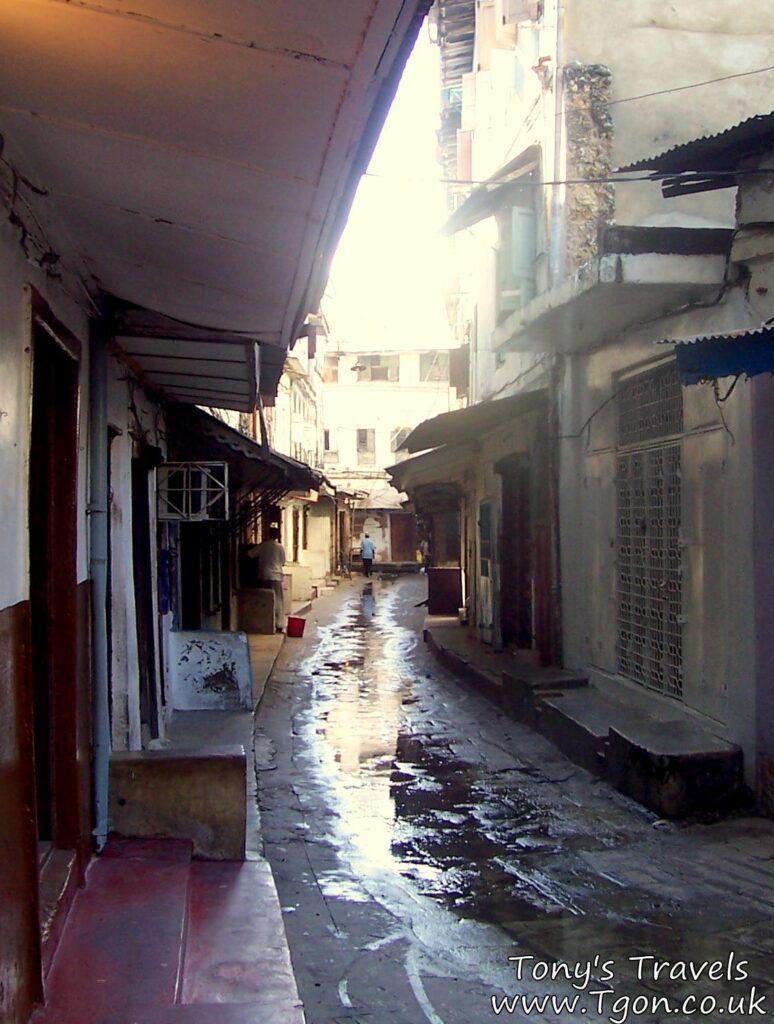
The sea front of Zanzibar Town, like most of the island, is beautiful. White sand and blue sea, best viewed from the balcony of the Zanzibar House Hotel, or the beer garden of Sweet Easy restaurant with a cool drink and plenty of time on your hands.


At night the park on the sea front, Darajani, is turned into a night market. A wonderful mix of colours, smells, tastes and souvenirs. Darajani is just in front of the old fort and the House of Wonders museum, both of which are worth a visit. Although I did find that the souvenirs bought at the night market were sometimes of a lesser quality to the other markets open in the day. I bought a bao board which seems good quality in the dark, but wasn’t so nice looking in the morning.

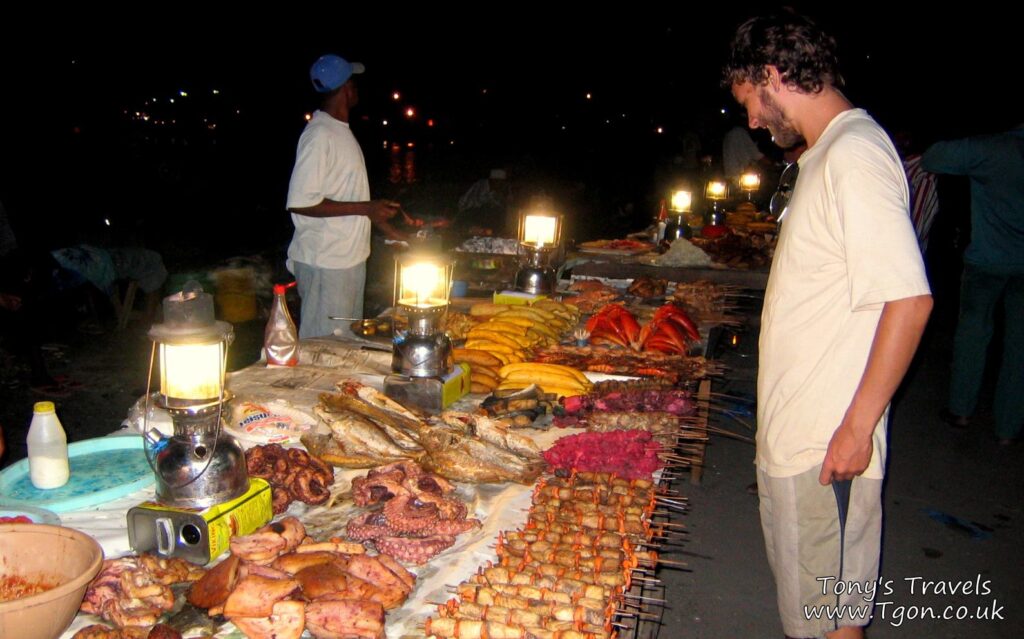
Zanzibar Town has a large market area close to the Dalla Dalla station. The outside market sells a variety of fruit, veg, herbs and spices. But the inside market sells fish and meat, walking through this part of the market takes a strong stomach and an ability to ignore your nose. I only visited this place a couple of times, and only returned to show other people what was inside.

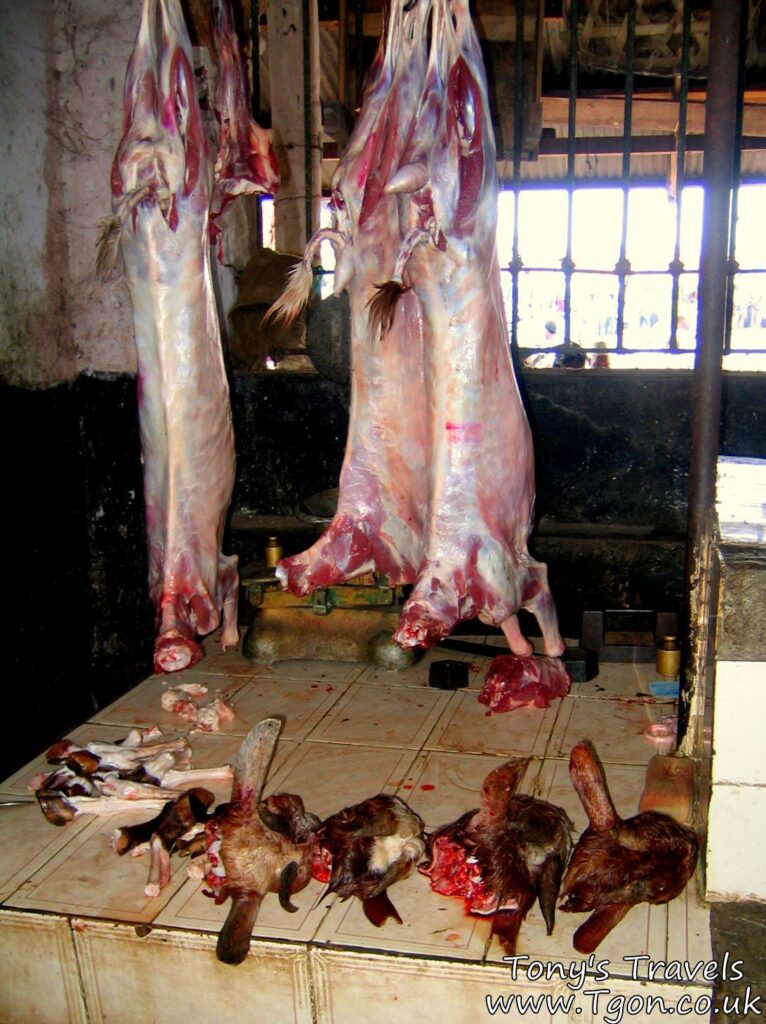
Nungwi
Nungwi is on the northern tip of the island and is the most beautiful place I have ever been. Truly idyllic tropical beaches, white sand, blue sea, palm trees. However, this also means that Nungwi is the most popular area for tourists, lots of hotels, restaurants and bars. A great place to spend an evening and the area is also host to a monthly full moon party.
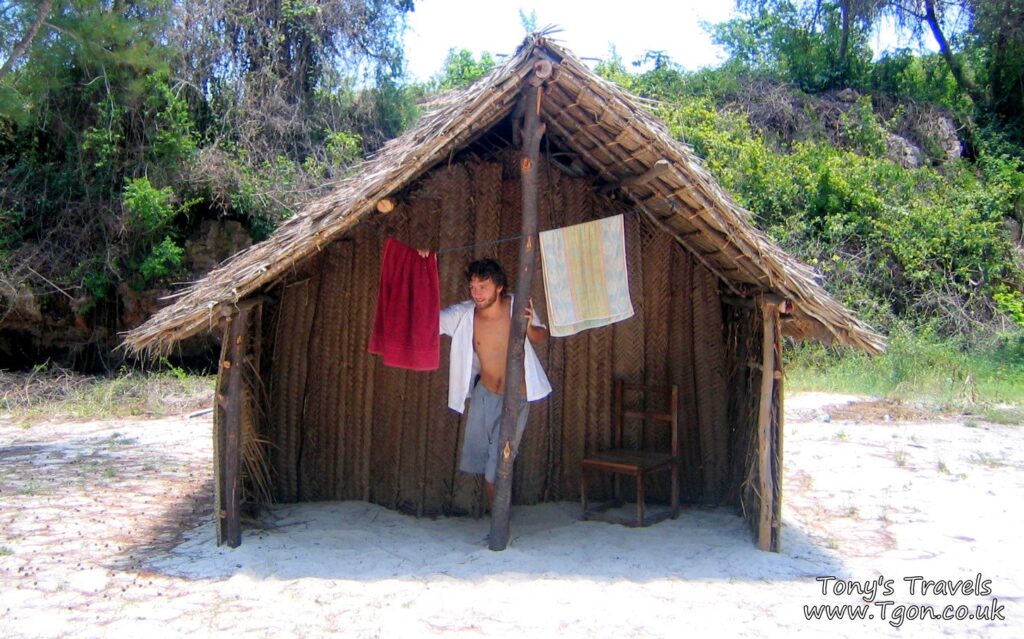
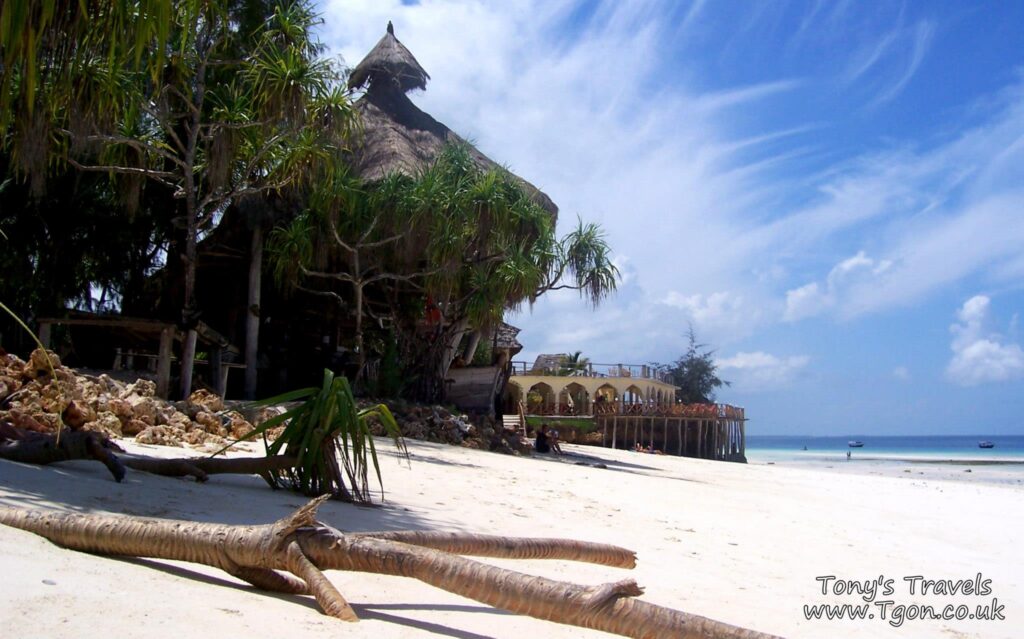
After one of the full moon parties I stayed in a hut on the beach and awoke to the pictures you see below. This particular area is slightly further around the coast to the west of Nungwi proper.
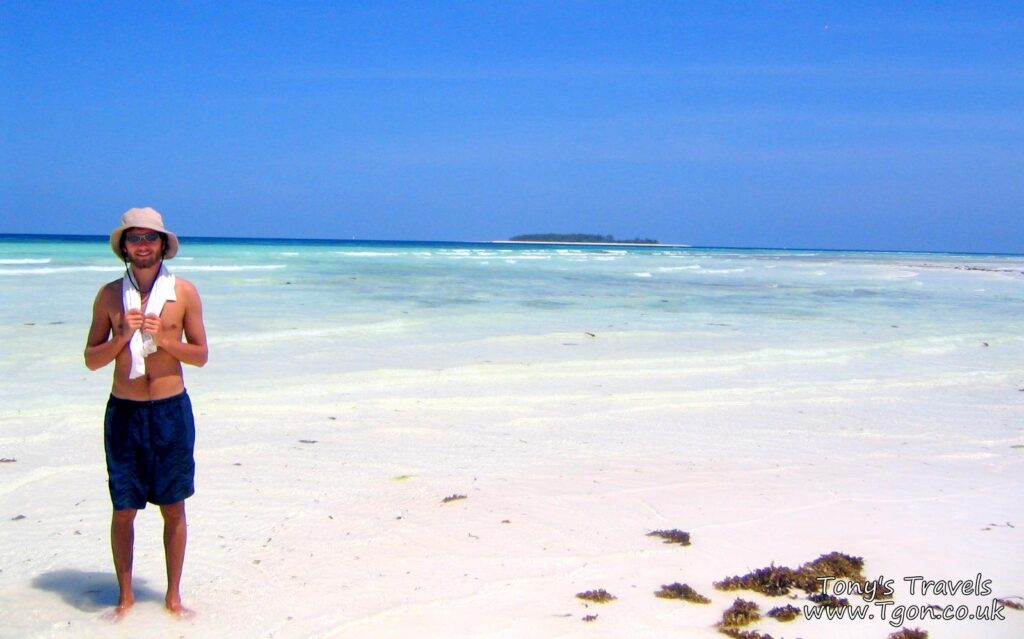
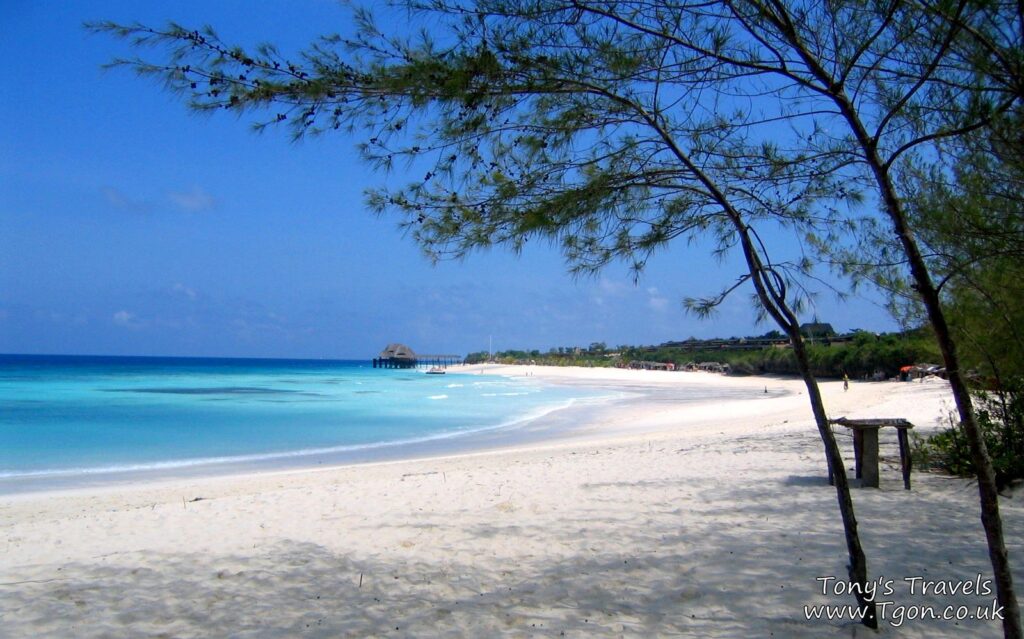
Moving further around the coast to the east you will find the perfection continues up towards a lighthouse. This area also has lots of fishing boats and you can usually find craftsmen working on boats under the trees at the edge of the beach. This lighthouse is home to a turtle sanctuary, for a small fee you can hand feed the turtles and hold some of the young. Most of the turtles have been rescued and are released when they are healthy along with the young turtles.
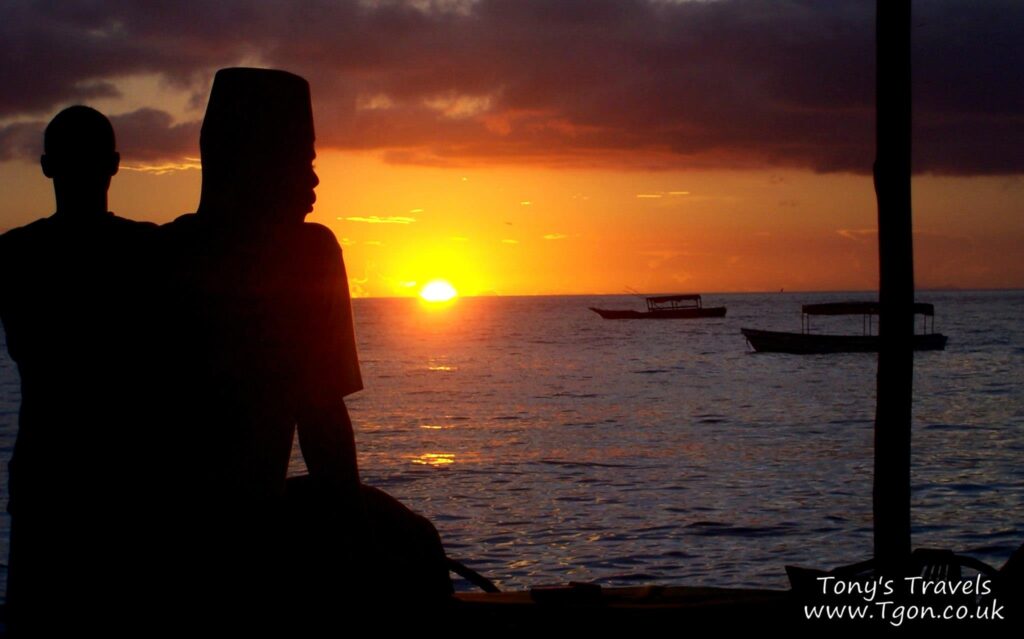
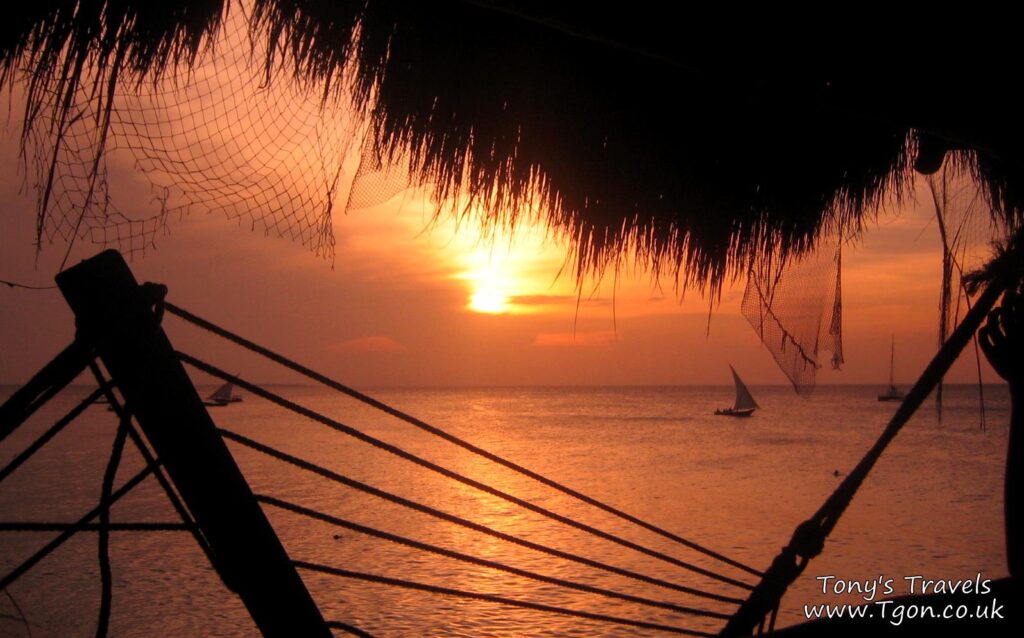
Nungwi is also home to some great snorkeling locations. A day trip to Mnemba Atoll is definitely worth paying for, the water is as clear as glass. Groups of snorkelers gather in the shallow waters with scuba divers moving further down the reef. By the time I visited Mnemba I had plenty of snorkeling experience and was able to snorkel as deep as the ‘try divers’.
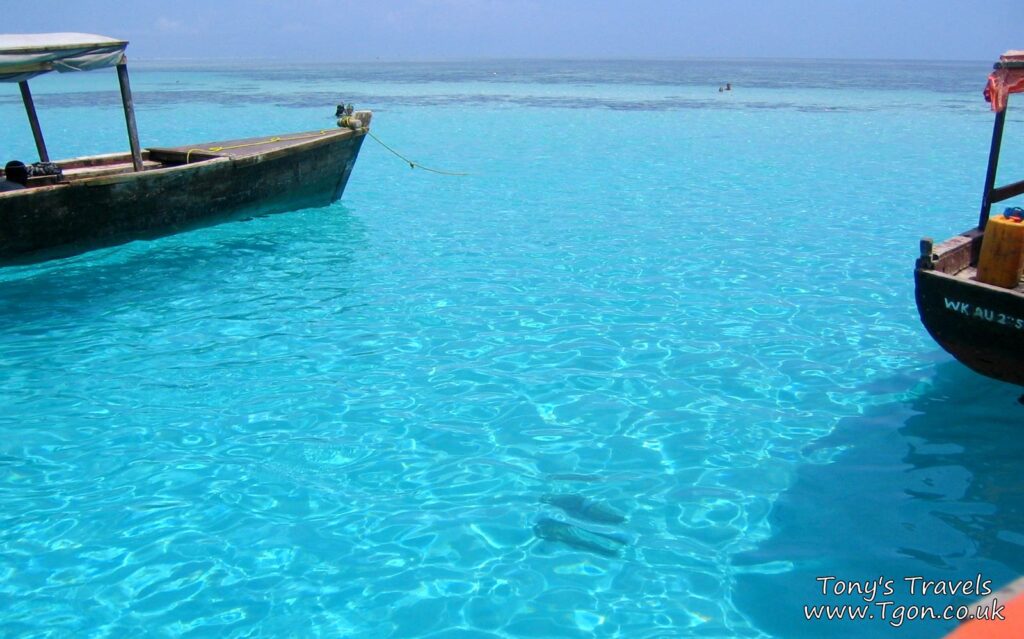
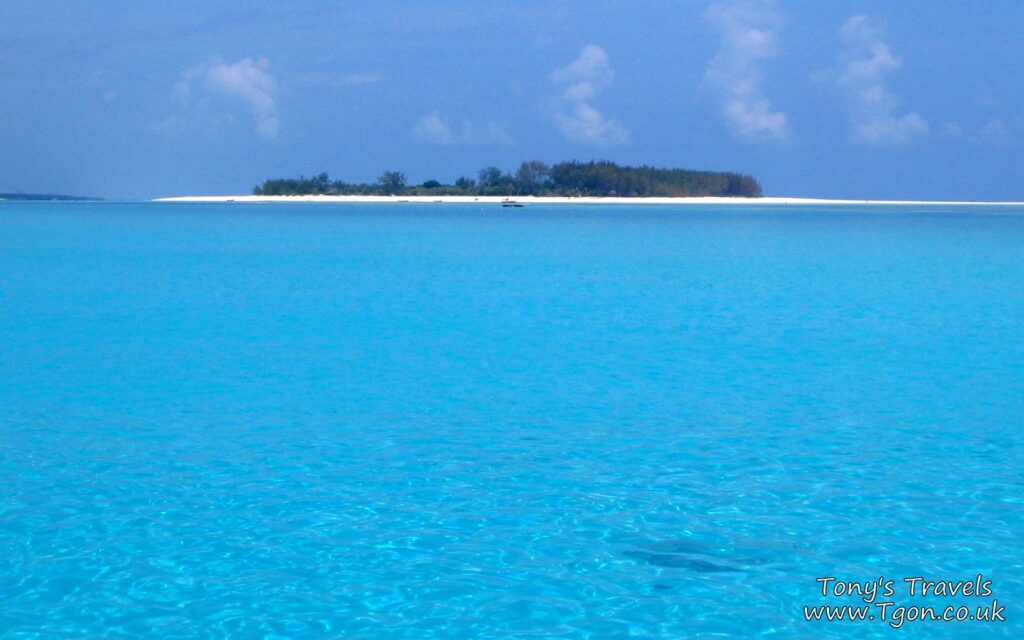
Other useful links:
